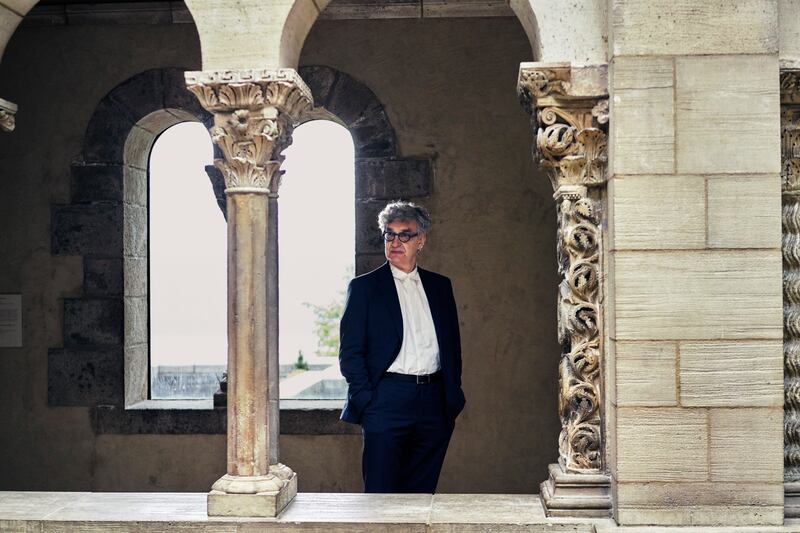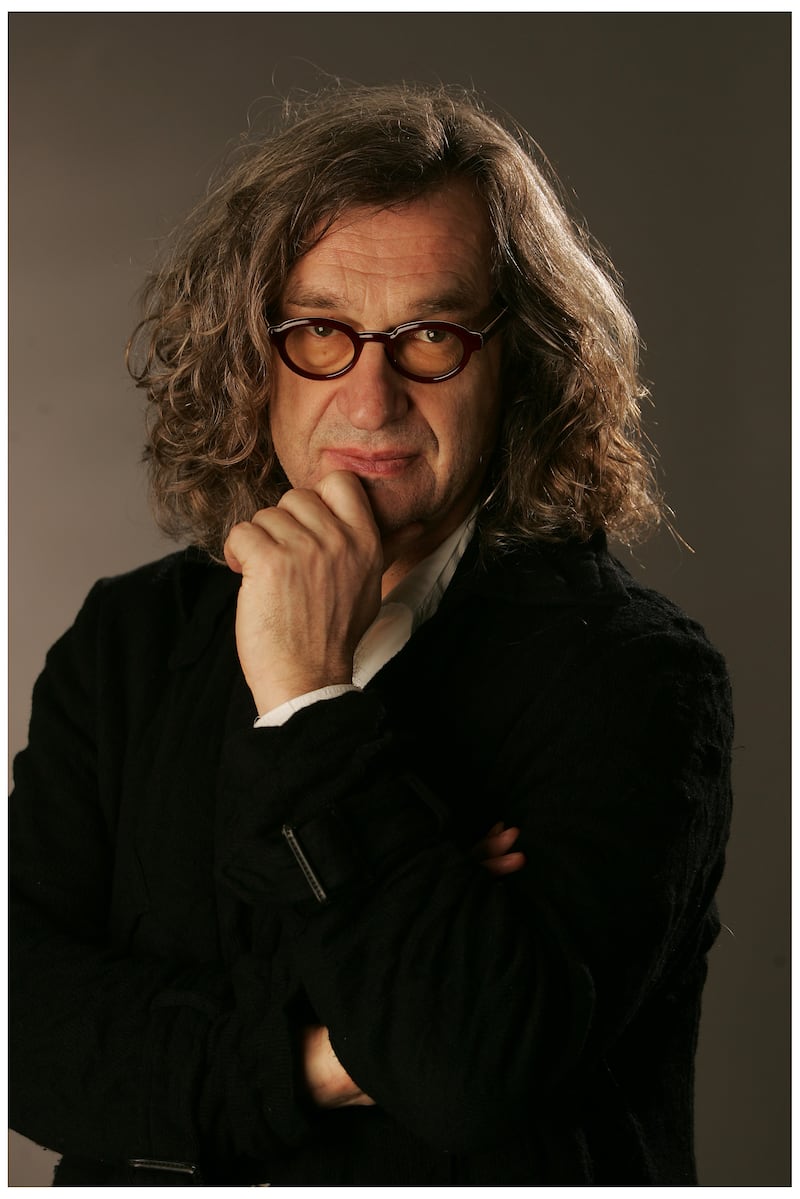Wim Wenders first landed in New York in 1972 as the hot new director of The Goalkeeper’s Fear of the Penalty, an existential drama in which a red-carded goalie kills a box-office cashier. Two years later, the filmmaker ventured westwards, towards North Carolina, for the shoot of Alice in the Cities. In that film, Rüdiger Vogler plays a German journalist on the road in the United States. Along the way he takes Polaroids, loses his job and meets the nine-year-old orphan of the title. Chuck Berry and John Ford’s obituaries enliven his subsequent journey through West Germany. It was the start of a beautiful friendship — Wenders and Americana — and it established a key notion in his milieu: the idea that the lure and romance of America is entirely manufactured in Europe.
“It was,” says Wenders. “I have to speak in the past tense, though. Nowadays, that notion has vanished. The American dream was dreamt and kept alive by these millions of Irish, Italians, Poles, Germans, Swedes and all the others who saw America as the promised land. And indeed, for some of them that dream came alive when they got there. Cinema nourished that dream mightily and effectively. But that is all history now. It was all still true for the young German who grew up on American culture in a colonised country that had little confidence in its own roots, its own values or stories. My first films dealt with that idealised America. The ideas and notions that constituted America all came from immigrants who could finally build the society that they were unable to form in Old Europe. These ideas, by now, have been abused and largely turned into their opposites.”

Vogler was the first of many vagabonds on many journeys. Wandering through the desert is as key to Wenders’s work as it is in the New Testament. Or perhaps more accurately, Goethe’s Wilhelm Meister books.
“The hopeless German romantic I confess to be had a huge fascination for wanderers,” says the director. “There is a whole genre of German 19th-century novels dealing with those characters and their longing to see what was behind the horizon. I wanted to be on the road as soon as I could, already as a child. And I became a filmmaker by discovering a genre, all by myself, that seemed to be made for a wanderer like me: the road movie.”
READ MORE
The director’s 1970s Road Movie Trilogy was followed by his Palme d’Or winner, Paris, Texas, in which a dishevelled Harry Dean Stanton reconnects with his family and seeks out the beautiful young wife (Nastassja Kinski), he had abandoned years before. It’s regarded by many, including critic Guy Lodge and the late Roger Ebert, as Wenders’s masterpiece.
“I had gone to America and to Hollywood to make something good, I had dreams of the great American film I could do there,” recalls Wenders. “That didn’t happen. I had to painfully realise I was not an American director, but a European one, with a German soul. In these six years I spent there I made a studio film for American Zoetrope, Hammett, which didn’t turn out to look like my dream of it, I made a documentary together with Nicholas Ray, and I made a pretty radical European author’s film, The State of Things.

“All three had their merits and marked the most important learning period of my life as a director, but none of them was the film I had set out to do in America. I wasn’t going to stay in America, I knew that. I had exorcised that American dream. I wanted to work and live again where I belonged, which was in my own country of Germany. And then I made Paris, Texas, but not as an American film, but as a European film about America. And all of a sudden, I had found my own groove back. A road movie, shot without much of a script, in chronological order, with my own crew and the people that had not been able to work on the other films: Robby Müller as DoP [director of photography], Ry Cooder as composer and Sam Shepard as writer. So I felt like a fish in the water. I finally made a film on my own turf. That’s why Paris, Texas mattered so much to me.”
Akira Kurosawa listed Paris, Texas among his 100 favourite films. Le Monde ran its 1984 review on the front page. It remains hugely impactful as a visual experience and a series of happy memories for its filmmaker.
“I loved shooting the entire beginning, deep in the wildest West, the Big Bend along the border to Mexico. We shot in the most remote places you can imagine, in empty landscapes and lost little towns in the middle of nowhere. And the end scenes with Harry Dean Stanton and Nastassja Kinski in the peep show were amazing and a great joy and discovery to shoot. They were written last minute for that location by Sam Shepard, at his best, and shot by Robby Müller at his best, with two actors, Harry Dean and Nastassja, at their best, and music by Ry Cooder at his best. I was a very happy man shooting the film. I felt I was working with great people, in great freedom, in the wide open spaces of the West. Sometimes during the shoot, especially during the peep-show ending, I knew we were touching something that would touch other people as well.”

This weekend, the German maverick’s peerless angel drama, Wings of Desire, is reissued in cinemas, heralding a major Wenders retrospective. Alice in the Cities, King of the Road, and Paris, Texas are among the featured works. It’s not Wenders’s first retrospective: New York’s Museum of Modern Art, to name just one institution, curated more than 20 feature films and numerous shorts for its 2015 Wenders programme. I wonder what insights he has gained into his own work on such occasions?
“It’s an interesting question,” he says. “A film as such remains the same. Even if — like in this case — the films that will be shown have been digitally restored to 4K, with meticulous care. But does a film really remain the same? The audiences change, their viewing habits change, the entire film culture around is in the process of changing drastically. My films are very open systems. They leave a lot of space and air for a viewer to project himself or herself into it. In a novel, you can read between the lines, even more so in a poem. I am certain that my films leave plenty of space between the images, so to speak, more than most others. Not that I want to pride myself, it’s just a matter of the approach. I loved the films in the history of cinema that were such open systems, and I love being able to dream myself into them, even get lost in them. That’s a privilege.
“Such openness makes films more vulnerable, obviously. They can more easily be misunderstood, but even more so they can become altogether invisible for people who are not used to seeing films to which they have to add something in their minds, or better, which they have to complete themselves by reading between the lines. A retrospective, therefore, is a very important process for me. It’s a bit like an inspection. Is the film still readable by a contemporary audience? What is it they see and what is it that escapes them? I sit in these screenings and I try to follow the film that the audience is seeing. Sometimes that’s a whole new film I discover in front of me. Do I learn something from it? Oh yes. I can see exactly where I didn’t leave enough space between the lines. Where I was following the plot instead of the story. Where I tried too hard to make a point. Where I didn’t trust the audience enough to fill the spaces. Air is a great thing in storytelling. And in music. I guess in life in general.”

Born in Düsseldorf, Wenders initially hoped to become a Catholic priest. He followed in the footsteps of his surgeon father, studying medicine for a year before switching to philosophy. When he failed to get into France’s national film school, he became an engraver at Johnny Friedlaender’s studio and a passionate cinephile. In the early 1970s, he emerged alongside Fassbinder, Herzog and Schlondorff as one of the architects of the New German Cinema movement.
“We were friends, not competitors,” says Wenders. “None of us was in a position to make films, because the existing industry, or whatever was left of it, didn’t want to have anything to do with us. So we had to start from scratch: we first had to learn how to produce, then how to distribute, then how to make our films cross borders. All of that was done in an act of amazing solidarity. Together, in our company Filmverlag der Autoren, we could be our own producers, because we were backed up by each other, by 15 other filmmakers. Any success by any of us was a success for all of us.
“I was friends with Rainer Werner Fassbinder, Werner Schröter or Werner Herzog. And with Herzog, we still are. Our advantage was that nobody touched the others’ territory. All of us had their own self-made film history, our own approach, our own language. That situation is very fortunate and you only get it in situations like ours when you are forced to a radical new beginning.”

In an extraordinary career spanning some five decades, Wenders has collaborated with directors Samuel Fuller, Nicholas Ray, Claire Denis, Pope Francis (Wenders directed the 2018 documentary, Pope Francis: A Man of His Word), and U2. Having made videos for Stay and The Ground Beneath Her Feet, Wenders directed The Million Dollar Hotel, a 2000 drama based on a story by Bono.
“That’s a rare case of the luck of the Germans, so to speak. I met the guys when they were recording Achtung Baby in Berlin. We had the same favourite restaurant. We said hi, one thing led to another, they asked me to do a video for them, which we did one rainy night on the roof of my building. Then they wrote a song for the film I was editing, Until the End of the World. That was only the beginning. We definitely became good friends over the years. And that is a precious treasure my wife and I really cherish. We write to each other quite often. Bono has been there for me on several occasions, like friends do. And I hope that happened vice versa as well. I love their music and I listen to it often. I love their lyrics and I know a lot of them by heart. Most of all, I love how they stick together as a band, and how they stand up to their beliefs.”
The Wim Wenders Retrospective is at the IFI from June 24th



















